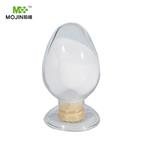- Ethanol, sodium salt
-

- $0.00 / 1Kg
-
2025-04-15
- CAS:141-52-6
- Min. Order: 1Kg
- Purity: 99.99%
- Supply Ability: 20 tons
- SODIUM ETHOXIDE
-

- $10.00 / 25kg
-
2025-03-31
- CAS:141-52-6
- Min. Order: 1kg
- Purity: 99%
- Supply Ability: 100
- SODIUM ETHOXIDE
-

- $0.00 / 25KG
-
2025-03-21
- CAS:141-52-6
- Min. Order: 1KG
- Purity: 99%
- Supply Ability: 50000KG/month
Related articles - The Preparation of Sodium Ethoxide
- Sodium ethoxide (also is the organic compound with the formula C2H5ONa) is a white to yellowish powder that dissolves in polar....
- Nov 20,2019
|
| | Sodium ethoxide Basic information |
| | Sodium ethoxide Chemical Properties |
| Melting point | 260 °C | | Boiling point | 91°C | | density | 0.868 g/mL at 25 °C | | bulk density | 300kg/m3 | | vapor density | 1.6 (vs air) | | vapor pressure | <0.1 mm Hg ( 20 °C) | | refractive index | n20/D 1.386 | | Fp | 48 °F | | storage temp. | Store at +15°C to +25°C. | | solubility | Soluble in ethanol and methanol. | | form | Liquid | | Specific Gravity | 0.868 | | color | Yellow to brown | | PH | 13 (5g/l, H2O, 20℃) | | explosive limit | 2.6-19% (v/v) | | Water Solubility | Miscible | | Sensitive | Moisture Sensitive | | Hydrolytic Sensitivity | 7: reacts slowly with moisture/water | | Merck | 14,8539 | | BRN | 3593646 | | Exposure limits | ACGIH: STEL 1000 ppm
OSHA: TWA 1000 ppm(1900 mg/m3)
NIOSH: IDLH 3300 ppm; TWA 1000 ppm(1900 mg/m3) | | Stability: | Reacts violently with acids, water. Incompatible with chlorinated solvents, moisture. Absorbs carbon dioxide from the air. Highly flammable. | | CAS DataBase Reference | 141-52-6(CAS DataBase Reference) | | EPA Substance Registry System | Ethanol, sodium salt (141-52-6) |
| | Sodium ethoxide Usage And Synthesis |
| Chemical Properties | White powder, sometimes having
brownish tinge; readily hydrolyzes to alcohol and
sodium hydroxide. | | Physical properties | White or yellowish powder; hygroscopic; darkens and decomposes on exposure to air; decomposes in water forming sodium hydroxide and ethanol; dissolves in absolute ethanol. | | Uses | Sodium ethoxide is used in organic synthesis for condensation reactions. It also is a catalyst in many organic reactions. | | Uses | Sodium ethoxide, 21% w/w in ethanol is used as a strong base in organic synthesis. It finds application in various chemical reactions such as condensation, esterification, alkoxylation and etherifcation. It is actively involved in Claisen condensation, Stobbe reaction and Wolf-kishner reduction. It is an important starting material for the synthesis of ethyl ester and diethyl ester of malonic acid. In Williamson ether synthesis, it reacts with ethyl bromide to form diethyl ether. | | Definition | ChEBI: An organic monosodium salt that has ethoxide as the counterion. | | Preparation | Sodium ethoxide is prepared by reacting sodium with absolute ethanol:
2Na + 2C2H5OH → 2C2H5ONa + H2
Sodium in small quantities is added to absolute alcohol at 10°C. The temperature is raised to warming (to about 38°C). The mixture is cooled again and sodium and absolute alcohol are added gradually followed by careful warming. The process is repeated to obtain a sufficient yield of the p | | General Description | Sodium ethoxide is an alkoxide salt mainly used as a strong base in organic reactions such as deprotonation, dehydration and dehalogenation. | | Hazard | As for caustic soda, ethanol. Sodium
hydroxide is formed when sodium ethylate is
exposed to moisture. | | Flammability and Explosibility | Highly flammable | | Purification Methods | It is a hygroscopic powder which should be stored under N2 in a cool place. A likely impurity is EtOH which can be removed by warming at 60-80o under high vacuum. It is hydrolysed by H2O to yield NaOH and EtOH. Other impurities, if kept in air for long periods are NaOH and Na2CO3. In this case the powder cannot be used if these impurities affect the reactivity, and a fresh sample should be acquired [IR: Seubold J Org Chem 21 156 1956]. [Beilstein 1 H 311, 1 IV 1289.] |
| | Sodium ethoxide Preparation Products And Raw materials |
| Raw materials | Ethanol-->Sodium hydroxide-->Sodium-->Cyclohexane-->Dehydrolyzing agent-->DL-1-Phenethylalcohol | | Preparation Products | UNICONAZOLE-->2-METHYLUNDECANAL-->2-METHOXYPROPANDIOIC ACID ETHYL METHYL ESTER-->Tween 80-->Ethametsulfuron-methyl-->NAFRONYL-->Ethyl 3-methyl-3-phenylglycidate-->2-Amino-4,6-dihydroxypyrimidine-->2-HYDRAZINO-6-METHYLPYRIMIDIN-4-OL-->2-ETHOXY-MALONIC ACID DIETHYL ESTER-->N4-Methylcytosine-->4-(4-FLUOROBENZYLOXY)BENZALDEHYDE-->4-TERT-BUTYL-2,6-DIMETHYL BENZYL ACETATE-->Diethyl isoamylmalonate-->2,2-dichloro-1-(4-ethyoxy phenyl)cy-clopropane carboxylic acid-->polysorbate 40-->Diethyl butylmalonate-->Triethyl 1,1,2-ethanetricarboxylate-->Triamterene-->2-(2-MORPHOLIN-4-YLETHOXY)ANILINE-->Cyclobutanemethanol-->Gliclazide-->3-CARBETHOXY-2-PIPERIDONE-->Quinazoline, 2-methyl- (6CI,7CI,8CI,9CI)-->ETHYL ISONICOTINOYLACETATE-->2,4,6-TRIAMINO-5-NITROPYRIMIDINE-->DIETHYL 2-(2-CYANOETHYL)MALONATE-->2,4-DIETHOXYPYRIMIDINE-->3-Furoic acid-->P-AMINO-DL-PHENYLALANINE-->Diethyl dipropylmalonate-->3-Aminopyrrolidine-->HYDROXYLAMINE-->Methyltriethoxysilane-->Dimethyl ethylmalonate-->FEMA 2310-->Polysorbate 20-->nony phenyl polyoxyethylene (50~150) ether-->2-Ethoxythiazole-->2-Methoxy-3-methylpyrazine |
|